NEWS
17.02.2022
Creating Bulging Muscles and Billowing Hair with Their Fingertips! A Close-Up with The Legendary Sculptors Who Molded the World of DB Figures!
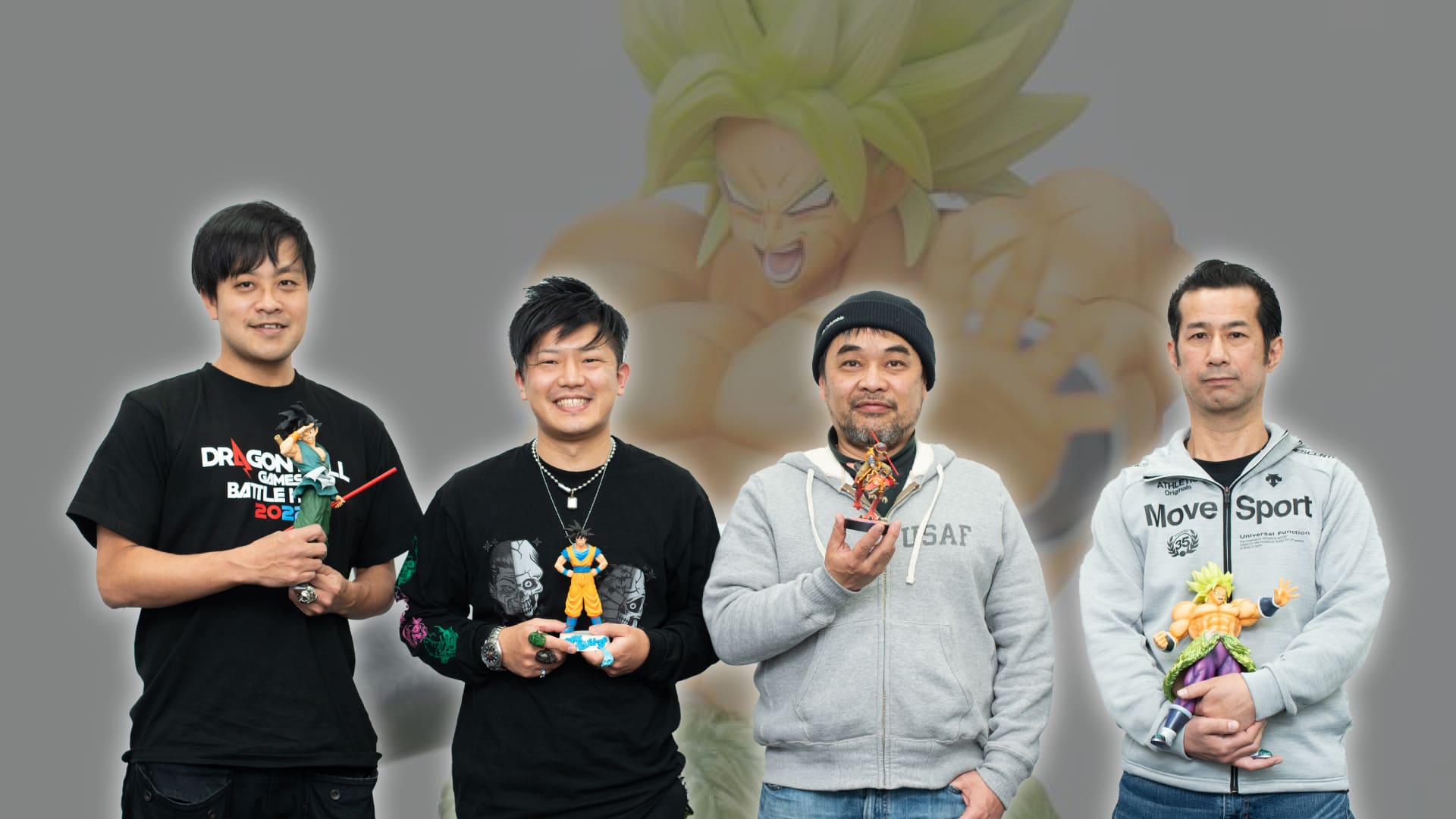
Greetings, Dragon Ball fans! I'm your writer for today, Noriyuki Enami.
Since the dawn of Dragon Ball figures, many new releases have been accompanied by advancements in modelling, coloring, and more, to the point where these days we're positively spoiled for choice with DB figure products.
There are many ways to acquire figures of your favorite warriors nowadays too. You can buy them at toy stores or even win them at game centers or through lottery-style Ichiban Kuji tickets at convenience stores, and the quality is always outstanding wherever you see them.
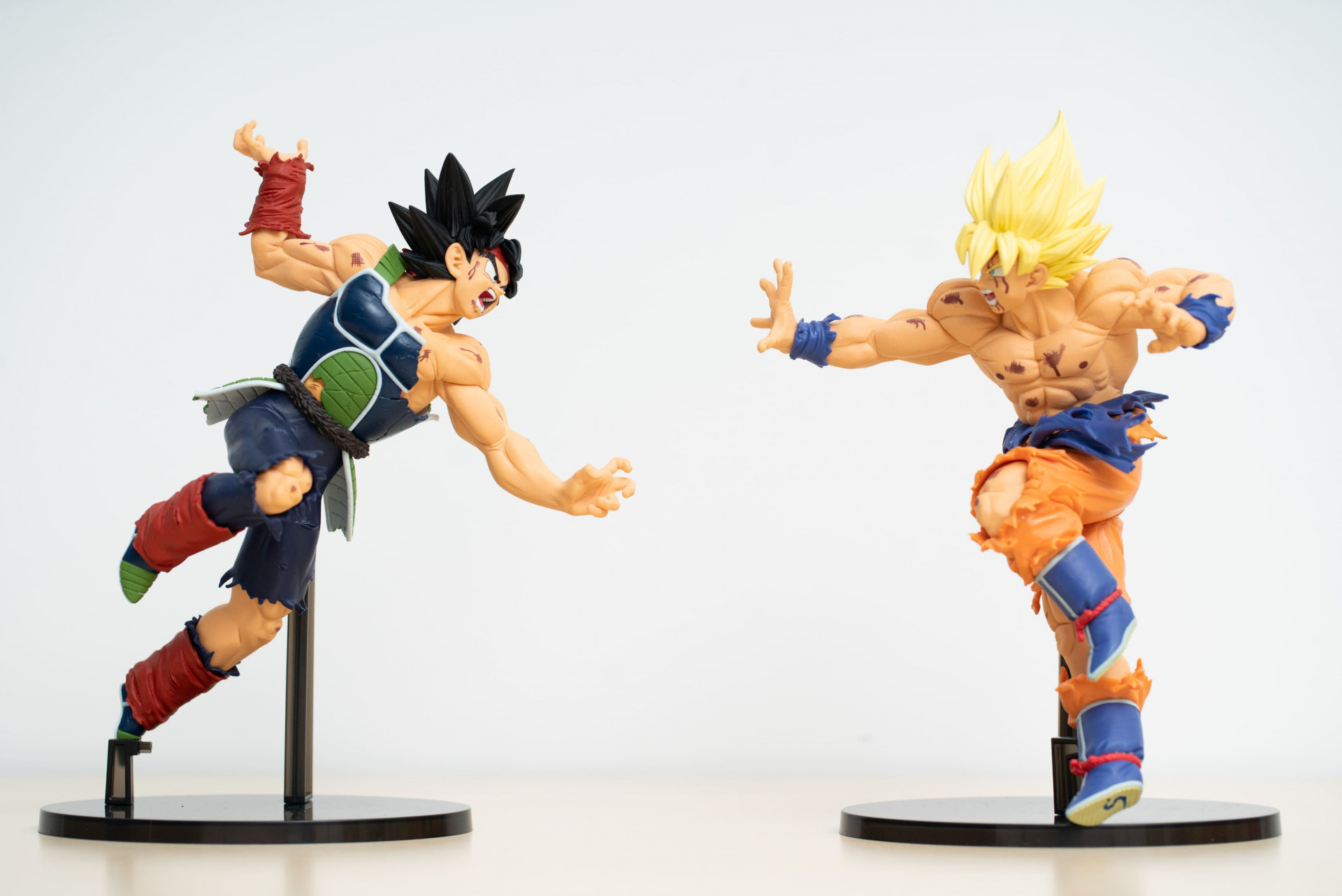
Figures available as prizes at game centers.
But we can't talk about the history of figures without paying respect to the sculptors who create the prototypes that go on to become the final product. Behind every figure is one of these professional craftsmen who bring their own expertise, passion, and style to the project, but rarely do they themselves get their chance to stand in the spotlight. So today, I've invited Dragon Ball sculpting legends Hiroyuki Nakazawa and Ren Kato, figure producer and regular collaborator of the two Norihiko Sakata, and creative director Yusuke Watanabe for a round-table discussion about their work.
Read on for the full interview, where I was lucky enough to ask them all kinds of questions about their industry, such as the unseen work of sculpting, the process from design all the way to production, and a closer look at the figure genre that the four have possibly worked on the most throughout their respective careers, prize figures for crane games and Ichiban Kuji.
The "God-Hand" Sculptor and the "Unfathomable Production Speed" Sculptor
——Mr. Sakata is a figure producer, Mr. Watanabe is a creative director, and Mr. Nakazawa and Mr. Kato are sculptors, so you all work in Dragon Ball figures, but you each fulfill different roles. Is it fair to say that?

BANDAI SPIRITS Figure Producer Norihiko Sakata
Norihiko Sakata ("Sakata" herein): My field is the planning and development of crane game prize figures, which involves first coming up with a concept. After I've thought about what kind of figure we should make, I then have a professional illustrator draw concept art, which goes over to the rights-holders, Toei Animation and Shueisha, for approval, and then to the factory for an estimate on the production cost. Then after all that, we can order a prototype from a sculptor and send them the concept art. Put simply, I'm the one overseeing and managing the whole process from planning to production.
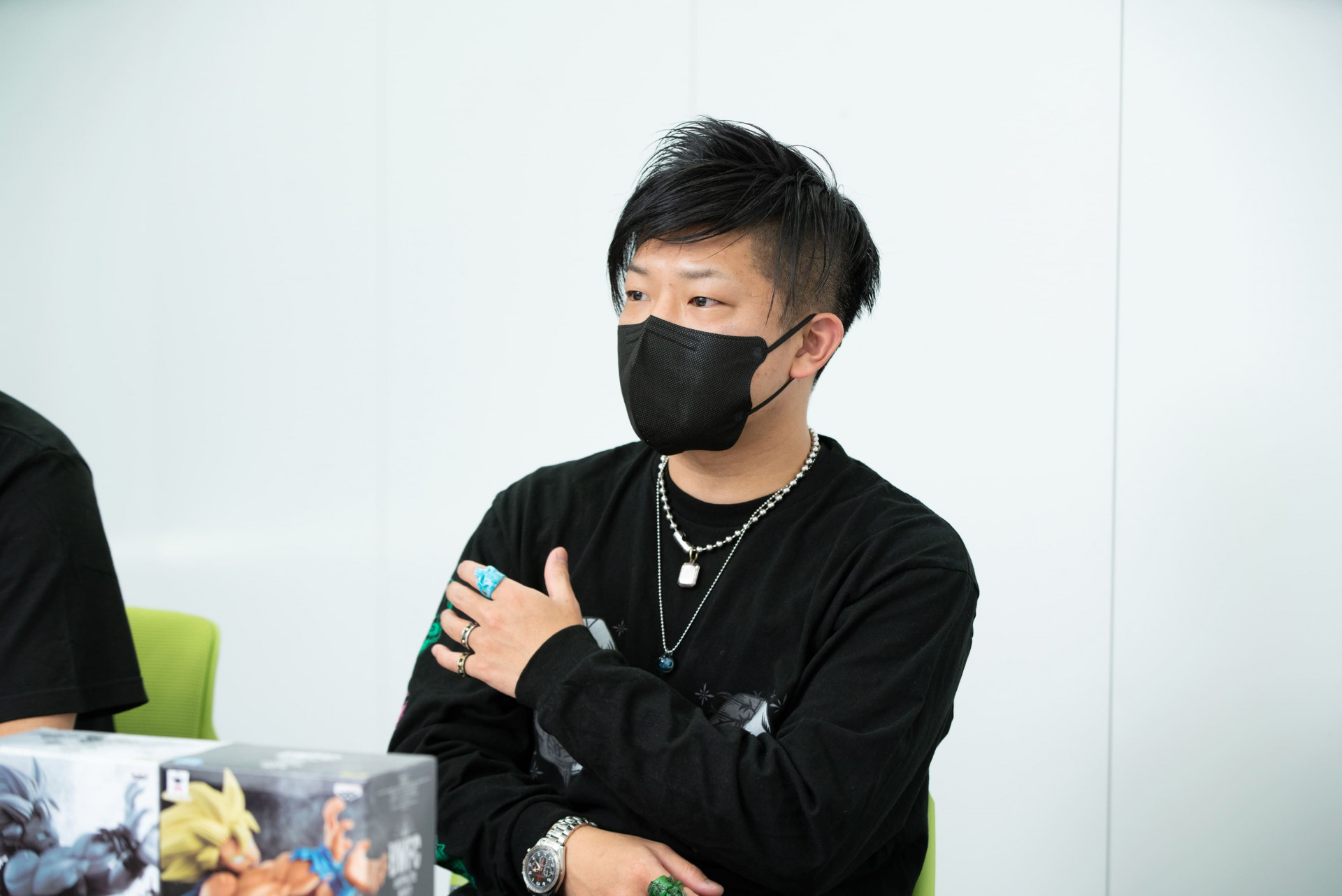
WATANABOX Creative Producer Yusuke Watanabe
Yusuke Watanabe ("Watanabe" herein): I come in from the outside as a producer for the figures. Mainly, I act as a go-between for BANDAI SPIRITS and the sculptors and manage things like the progress, deadlines, and quality control. I work together with the sculptors to make the figures as cool as possible by giving them feedback and suggestions on the design, right down to very fine details like the angles of their arms and neck, their hair, and so on. Then, when we get the green light from the producer, Mr. Sakata, I take care of the coloring and submit the final prototype.

Figure Sculptor Hiroyuki Nakazawa
Hiroyuki Nakazawa ("Nakazawa" herein): As a sculptor, I receive orders from producers like Mr. Sakata and Mr. Watanabe to create prototypes for figures, which then get used at the factory to be mass produced. My specialty is hand-sculpting, which is where you create the prototypes physically by hand, and for that I mostly use resin clay because it's easy to work with and add detail to when hand-sculpting.
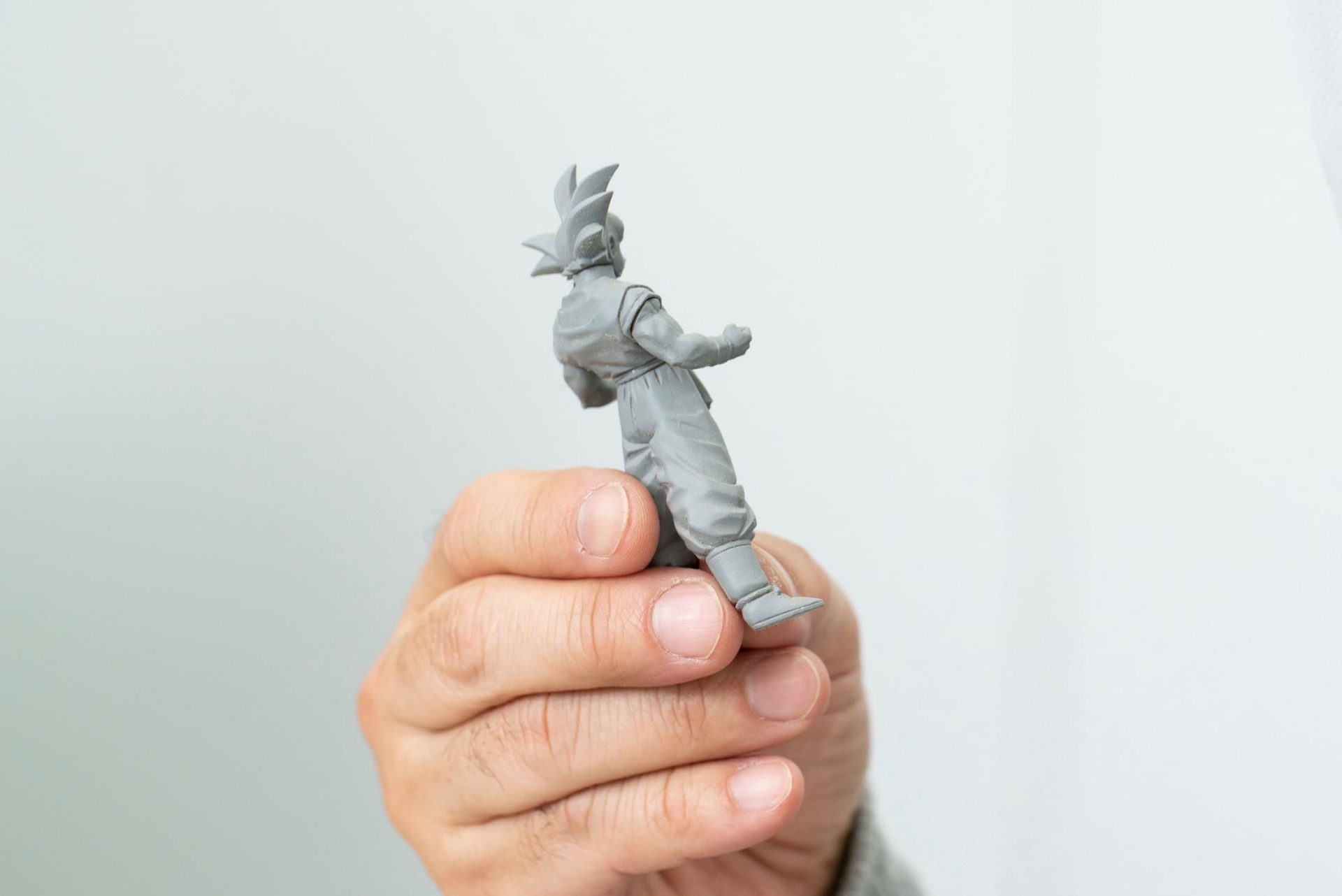
An example prototype, which is different from a model.
I've been working with figures for around 40 years if you include my time as an amateur, and around 20 years counting from when I became a professional figure sculptor. It all started with my first Dragon Ball job from Kaiyodo*.
*Kaiyodo is a model-production company based in Kadoma, Osaka Prefecture, known for their world-leading modelling technology.
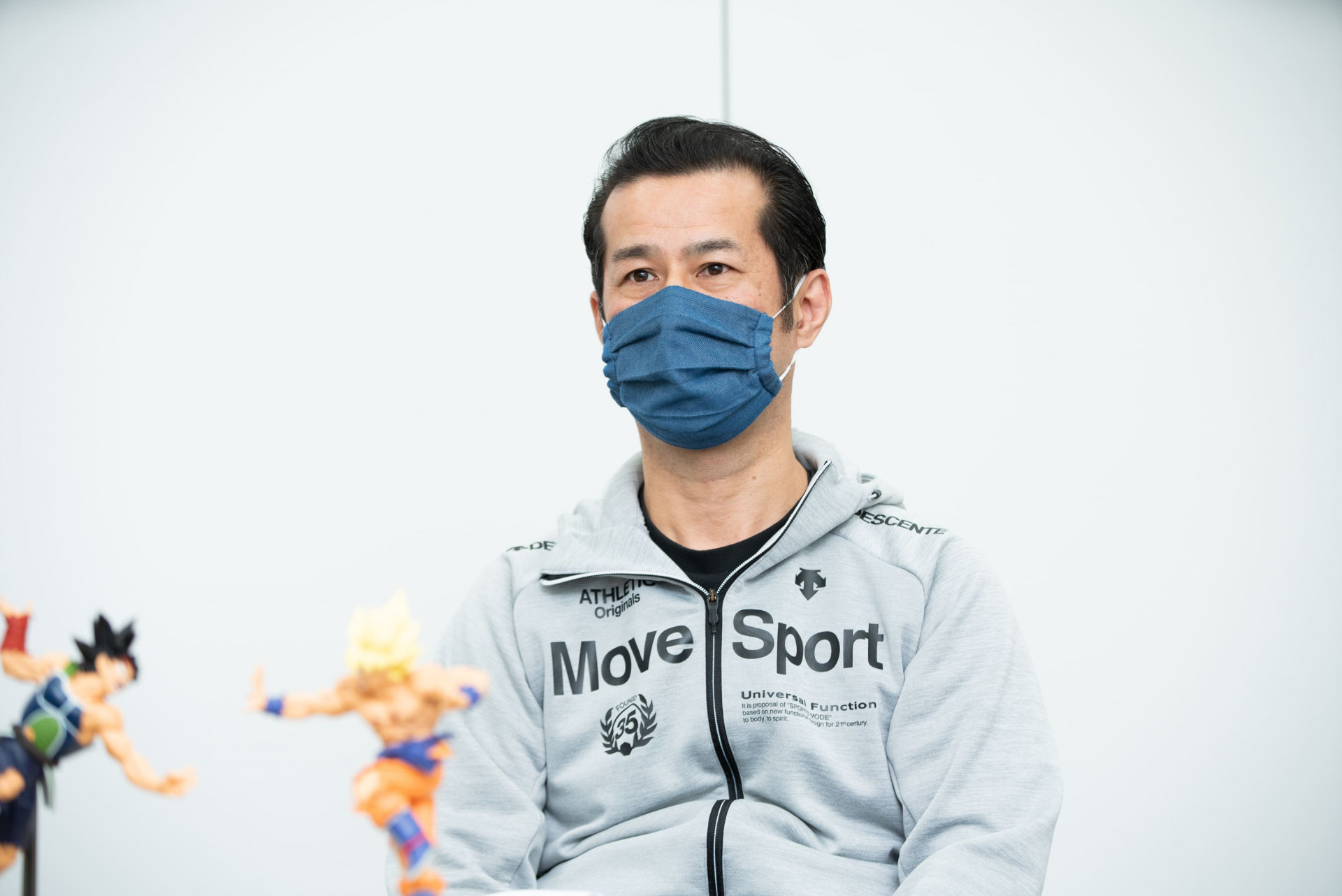
Figure Sculptor Ren Kato
Ren Kato ("Kato" herein): As for me, I used to be a hand-sculptor like Mr. Nakazawa, but I made the switch to digital around five years ago. So now I create CG models and then send that data to a 3D printer to be printed out. I actually used to be a sculptor for Kaiyodo too, and my debut figure was indeed a Dragon Ball figure.
——Mr. Nakazawa and Mr. Kato have been involved in pretty much every Dragon Ball figure that's come out of BANDAI SPIRITS, right?
Sakata: These two are absolutely essential to our work, yes. They're just so...good. And they work incredibly fast too!
Watanabe: I remember once we'd ordered a very large number of prototypes from Mr. Kato, but before we knew it, they were all just being delivered to BANDAI SPIRITS. It really threw Mr. Sakata for a loop! He was like, "This can't be possible... How is he so fast?!" (laughs)
Sakata: I know that Mr. Kato has several people working with him on his projects, but even considering that, he's still about three times faster than other companies. If something should normally take three months, he's putting it in our hands after one. He must be using Kaio-ken or something to work that fast. I'd advise other companies or any burgeoning sculptors out there to not set that kind of standard for yourself though. Mr. Kato is just on another level.
——Mr. Kato, how is it that you're able to work so fast?
Kato: I'm not sure myself, really. They give me jobs and I just do them. I didn't even know that my work was considered fast until Mr. Watanabe and Mr. Sakata told me.
Sakata: On the other hand, Mr. Nakazawa is like the god of hand-sculpting. I don't think there's anyone else who can match his quality and speed when it comes to working by hand. His dioramas are incredible too. The way he's able to take a 2D image and turn it into a full-on 3D scene, he’s probably the best in Japan. Normally when you try to turn a 2D scene into 3D, there are certain parts of the modelling that will turn out looking unnatural, but when Mr. Nakazawa does it, the result is always perfectly balanced and just beautiful to look at.
Nakazawa: You're very kind. But I think that from my own perspective, just like in the world of Dragon Ball, there's always someone better out there. (laughs)

What Separates "Figures" and "Dragon Ball Figures"?
——You're both so modest. I think that's one of the marks of a professional, though. By the way, what do you two take the most care with when creating your prototypes for Dragon Ball figures?
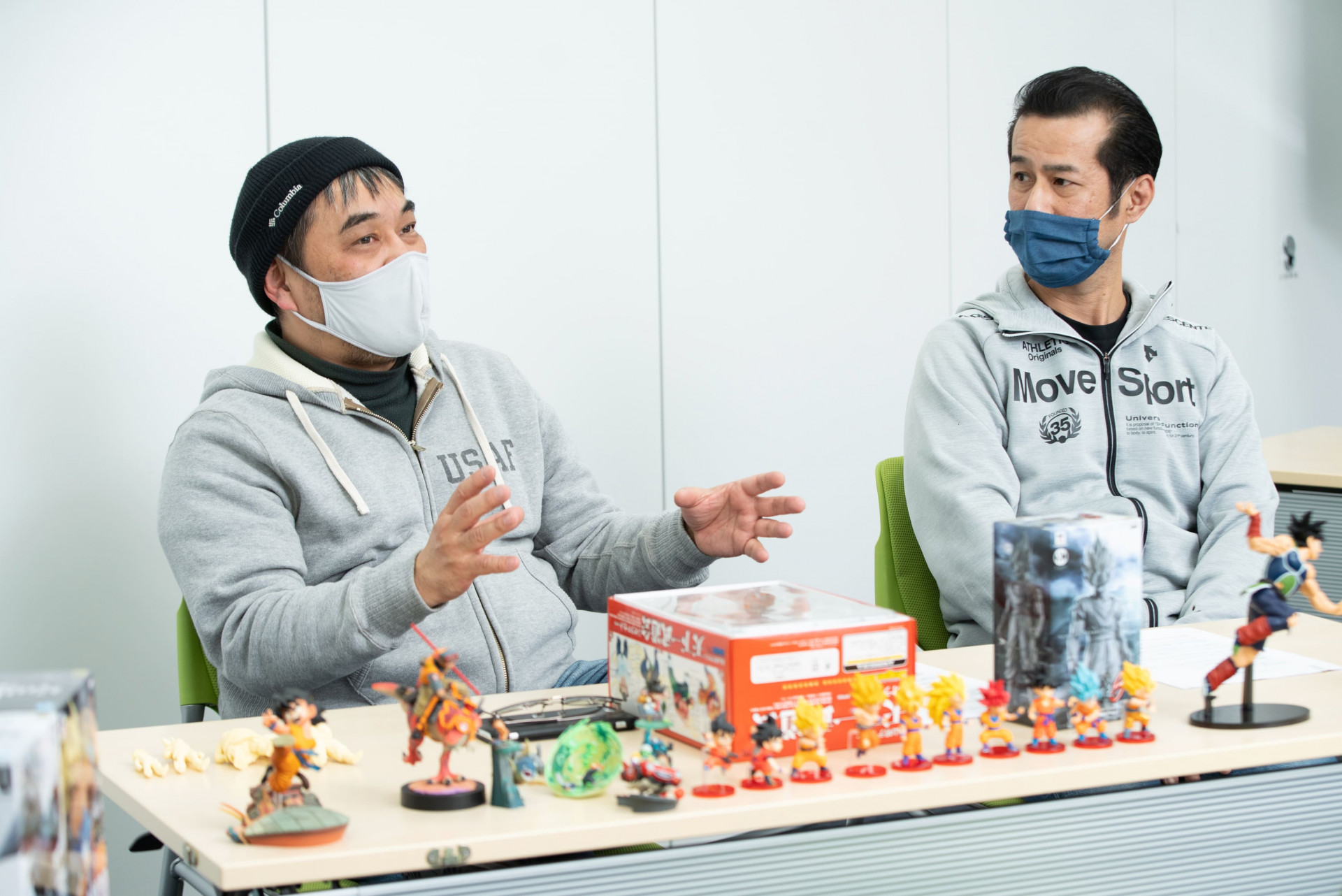
Nakazawa: I always take care not to make them too realistic. There are some parts of anime and manga design where they intentionally forego realism for the sake of momentum and making it look cool, so some parts of the figures I make, like the muscles or the way the clothes are rippling for example, are very different to what they should look like if they were "real". I think that one of the marks of a good sculptor is being able to make an unrealistic design look natural when people see it in 3D. Just like with western art compared to ukiyo-e, part of the appeal of Japanese manga is that it is unrealistic, and so I always take care not to lose that aspect of the medium's appeal when transferring it to a figure.

One of Mr. Nakazawa's figures. The sense of distance between Goku and the Tenkaichi Budokai Arena is manipulated through warped 3D expression that can only be achieved through hand-sculpting.
(The figure pictured above is from the "Dragon Ball Selection" series of collectable figures.)
Kato: I feel pretty much the same way as Mr. Nakazawa. If you aren't careful, the design ends up looking too realistic, so you need to remember that you're making something for fans of anime. Then it all comes down to whether you can make it work in 3D.

Mr. Kato's Ichiban Kuji Broly figure. Each individual part was created digitally in 3D and then assembled into the final product. Broly's hair alone is made up of three separate parts.
Watanabe: I'd have to say, though, that no matter how hard you try to emulate the sense of action and motion from games and anime, you can't make a Dragon Ball figure that looks like "Dragon Ball" unless you're very familiar with Akira Toriyama's original work.
Nakazawa: You're absolutely right.
Watanabe: For example, if you look closely at Goku's boots in the manga, you'll see that the heel is often drawn to curve inward a little bit. For a realistic model, the heels would jut out more, but they're intentionally drawn differently in the manga. I think that’s the kind of very fine detail that you have to know and recreate in figures if you really want the final product to feel like Dragon Ball.
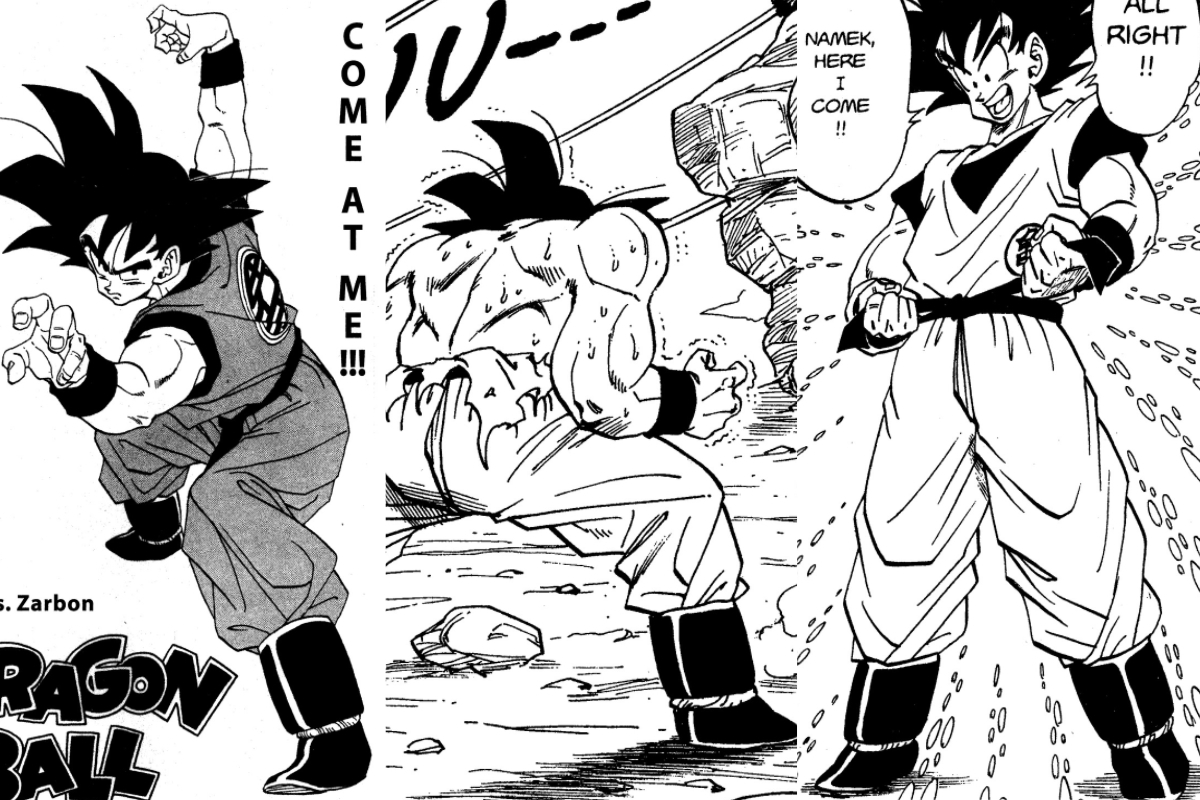
Now that you mention it, Goku's boots really do curve inward at the heel...
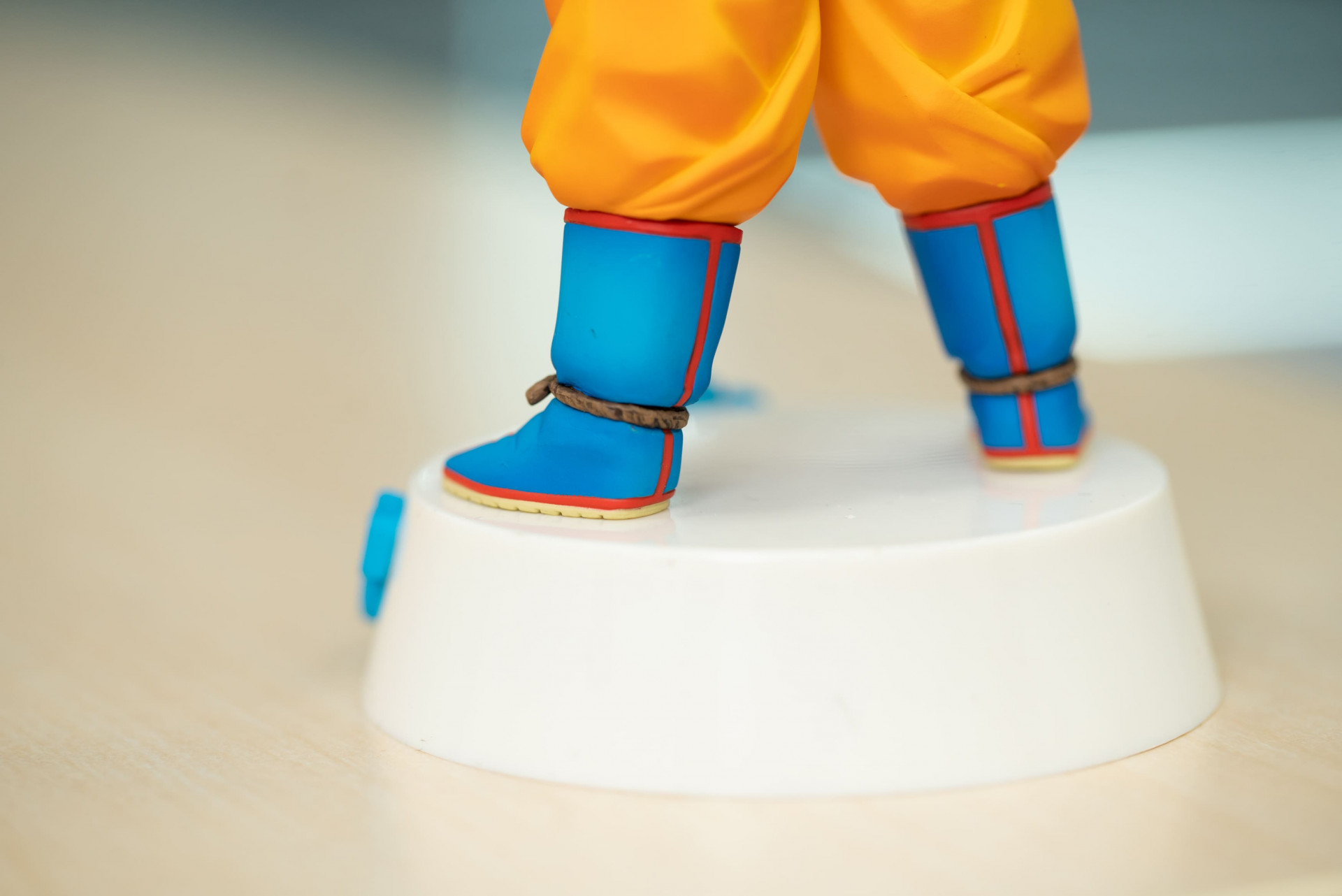
It's very subtle, but that detail is reproduced in this figure.
Nakazawa: I think the reason that Toriyama draws the boots that way is because it adds something to the overall balance of the picture. You really can't take anything for granted when you're looking at the original art. I like finding that kind of thing and putting it into the figures, though. I think I'm the number one figure sculptor in the world when it comes to closely scrutinizing Toriyama's artwork. (laughs)

An illustration from "DRAGON BALL CHOGASHUU" (left) and a figure created by Mr. Nakazawa based on it. The back view not shown in the original art, so the dinosaurs' muscles, the relative sizes, and more were all decided by Mr. Nakazawa based other Dragon Ball works. One of his finest creations, it shows off Mr. Nakazawa's extraordinary ability to capture Toriyama's style in 3D.
(The figure pictured above is from the "Desktop Real McCoy" series of collectable figures.)
The Astonishing Evolution of Figures via Trial and Error
——These days, you can find Dragon Ball figures in a great number of places, including crane games in game centers, convenience stores, and more. Just how many different kinds of figures are available right now?
Sakata: To be honest, I don't even know myself.
At our company, we have separate divisions for making plastic models you can buy at toy stores, posable figures, non-posable figures, figures you can get through Ichiban Kuji at convenience stores or that come with candy, figures you can get as prizes at game centers, as well as figures for Gashapon and so on.
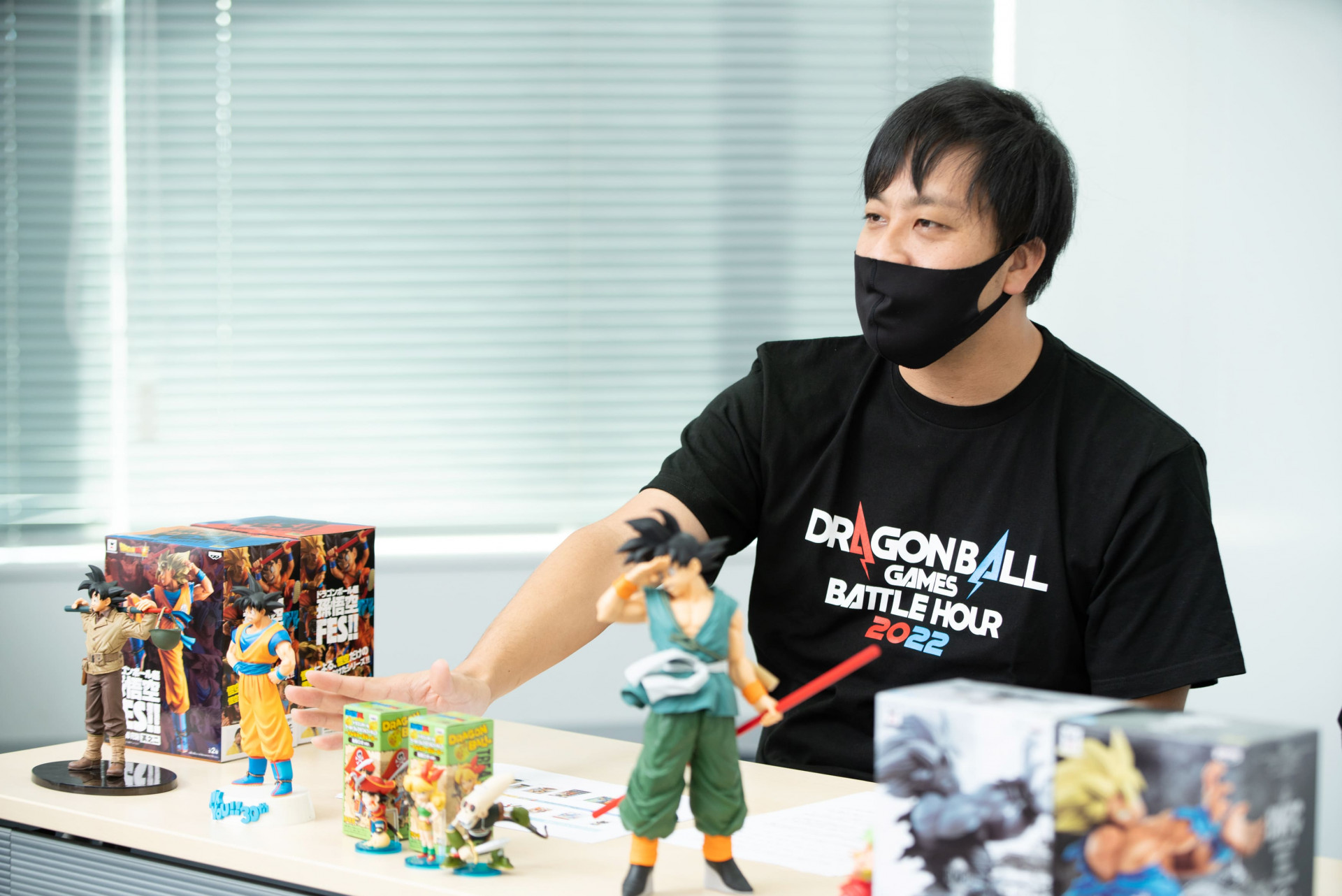
——Would you say that the figures being made now are of higher quality compared to way back when?
Sakata: For sure. The first Dragon Ball figures were released more than 35 years ago, after all. I think the technology and tools at our disposal have advanced in leaps and bounds.
——I agree. Even as a mere consumer, there are a lot of times when I think, "This is way more refined than they used to be." What would you say specifically led to all this progress?
Sakata: Back in the '80s when Dragon Ball figures were first being made, the creators at the time were trying different things with painting, deformation, and so on in a kind of "trial and error" style.
This is just my own conjecture, but I think that Dragon Ball was very difficult for sculptors to work with back then. Take the characters' muscles, for example. Unlike other anime and manga at the time, they're very robust and angular. Even Goku's spiky hair is something that I can see being a real challenge for sculptors in those days.
Nakazawa: That's right. Yajirobe's hair in particular was extremely difficult for me.
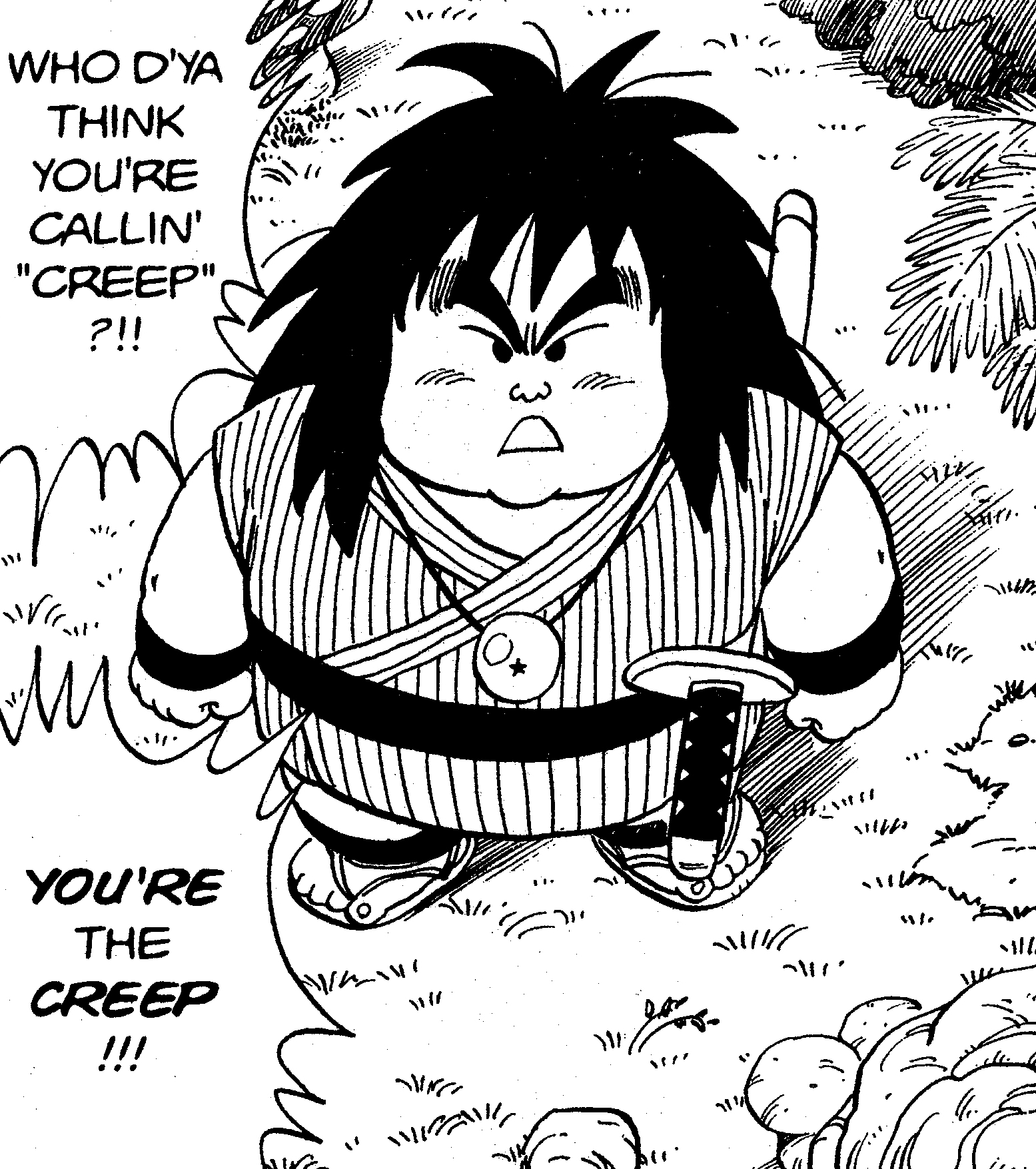
Sakata: Thanks to the cumulative trial and error of our predecessors, full-color figures had become much more widespread in the '90s, but there still weren't any figures that could quite capture the look of things like muscles and hair as they appear in the manga and anime. I personally love the figures from that era though. You can really tell that they're hand-made from their designs.
But I think when you get to the 2000s, the quality jumps right up. I joined the company in 2002, and by then it was much easier to get approval from the rights-holders, so we were making a whole lot of products. Thanks to that, the number of people involved in production and the collective knowledge and expertise surrounding us was growing too.
——Figures being made to be prizes still weren't quite there yet in terms of quality and quantity though, right?
Sakata: That's right. I was put in the prize department right from the very start, so I spent my time meeting as many sculptors as I could and having a lot of conversations about what kinds of figures I wanted to make with them. I barely spent any time in the office at all until around my seventh year at the company—I was too busy running about and wrangling sculptors.
Somewhere during that time, we really started to home in on what the right way to do things was, no doubt owing to the amazing sculptors like Mr. Nakazawa that we connected with, and that's when the quality of prize figures really shot up.
At the same time, the production technology in the factories that we used was advancing too, and the fact that they could do a lot more with the figures in terms of expression and detail had a huge influence.
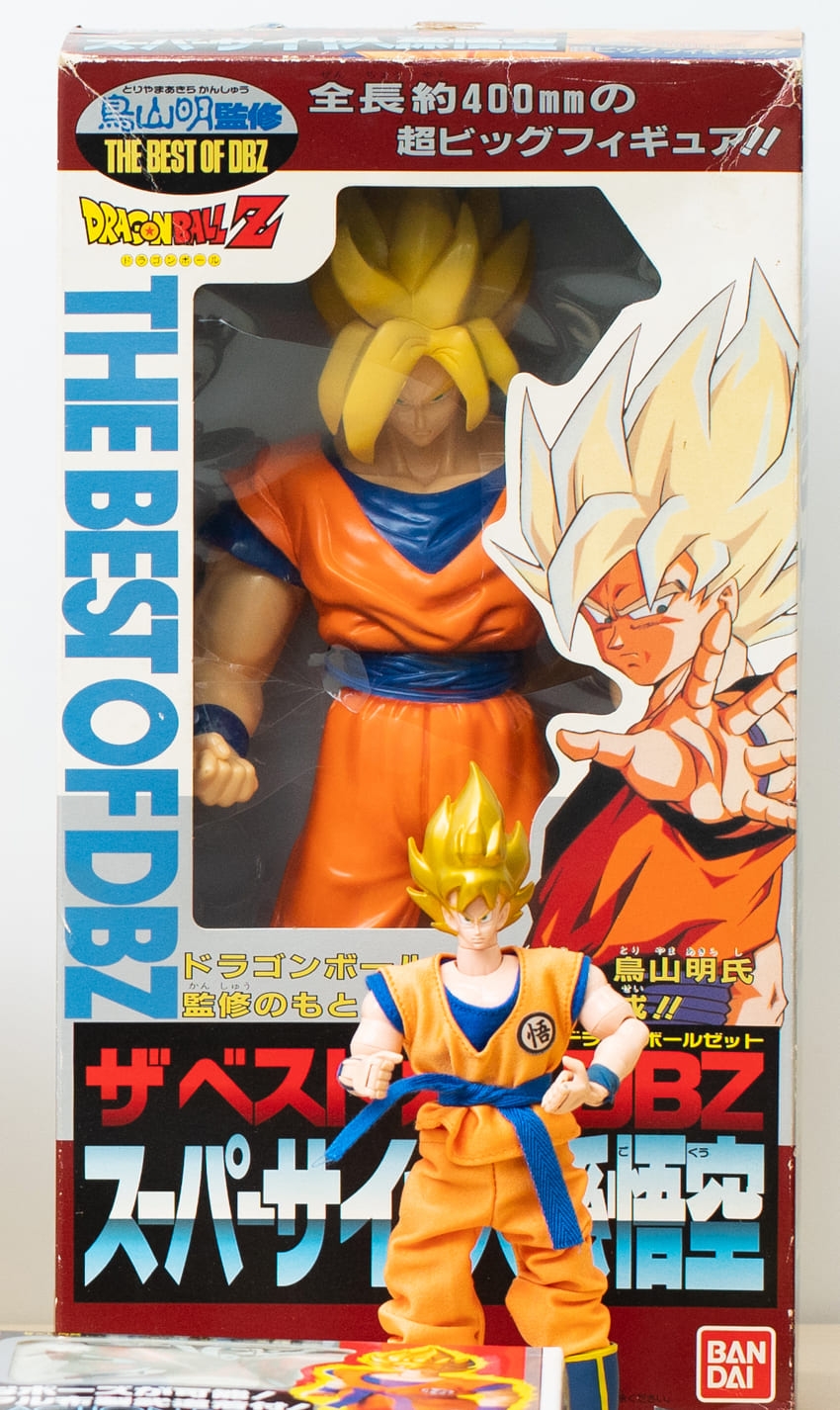
The boxed figure in the background above is a 1993 "The Best of DBZ", which was comparatively large at 400mm tall.
In the foreground is a posable figure released in 1991 with a cloth uniform.
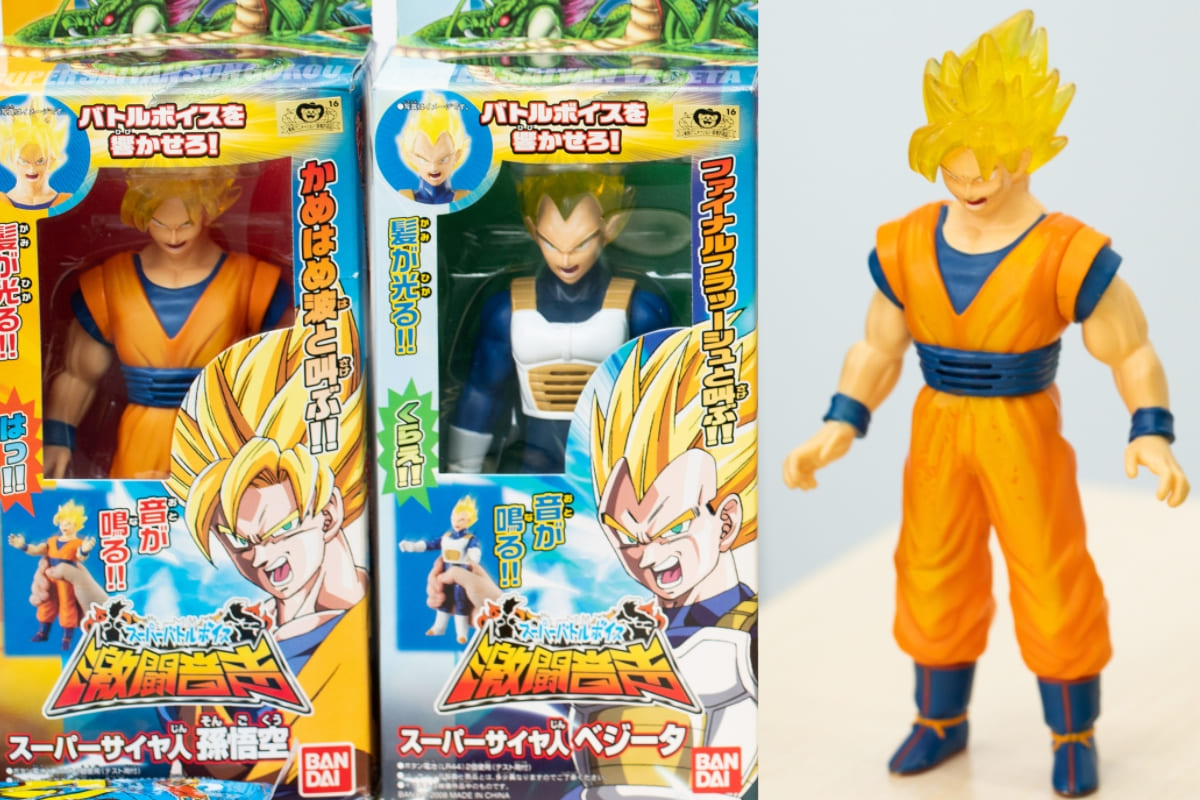
These "Gekitou Onsei" figures from 2008 could light up and make sounds at the touch of a button.
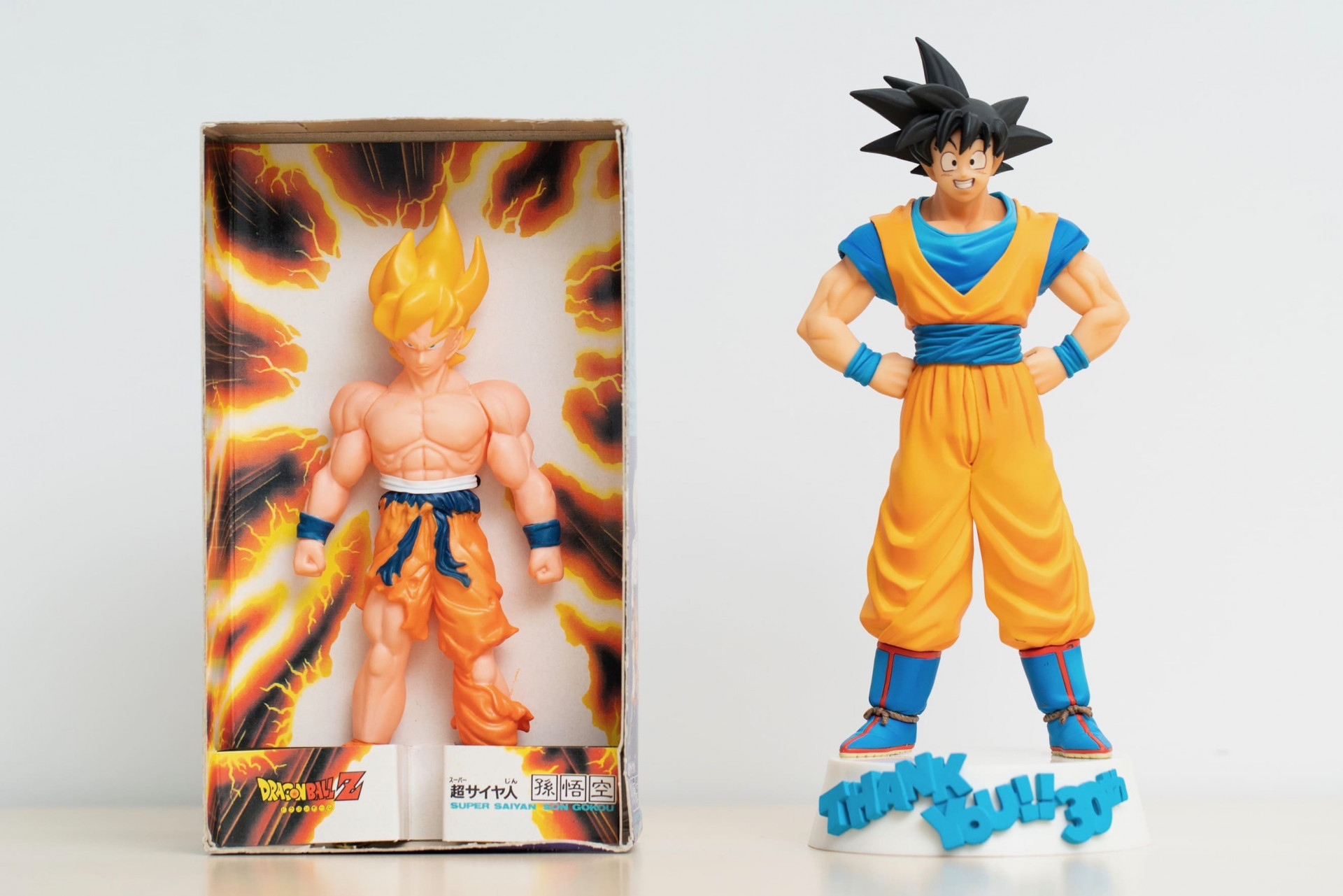
Pictured left is a 1992 soft vinyl figure. On the right is an Ichiban Kuji figure from 2014. You can see from the details in the facial expressions, creases in the clothes, and the texture of the muscles that the designs are getting closer to that of the original manga. You can also see how the range of colors available to production has expanded over the years.
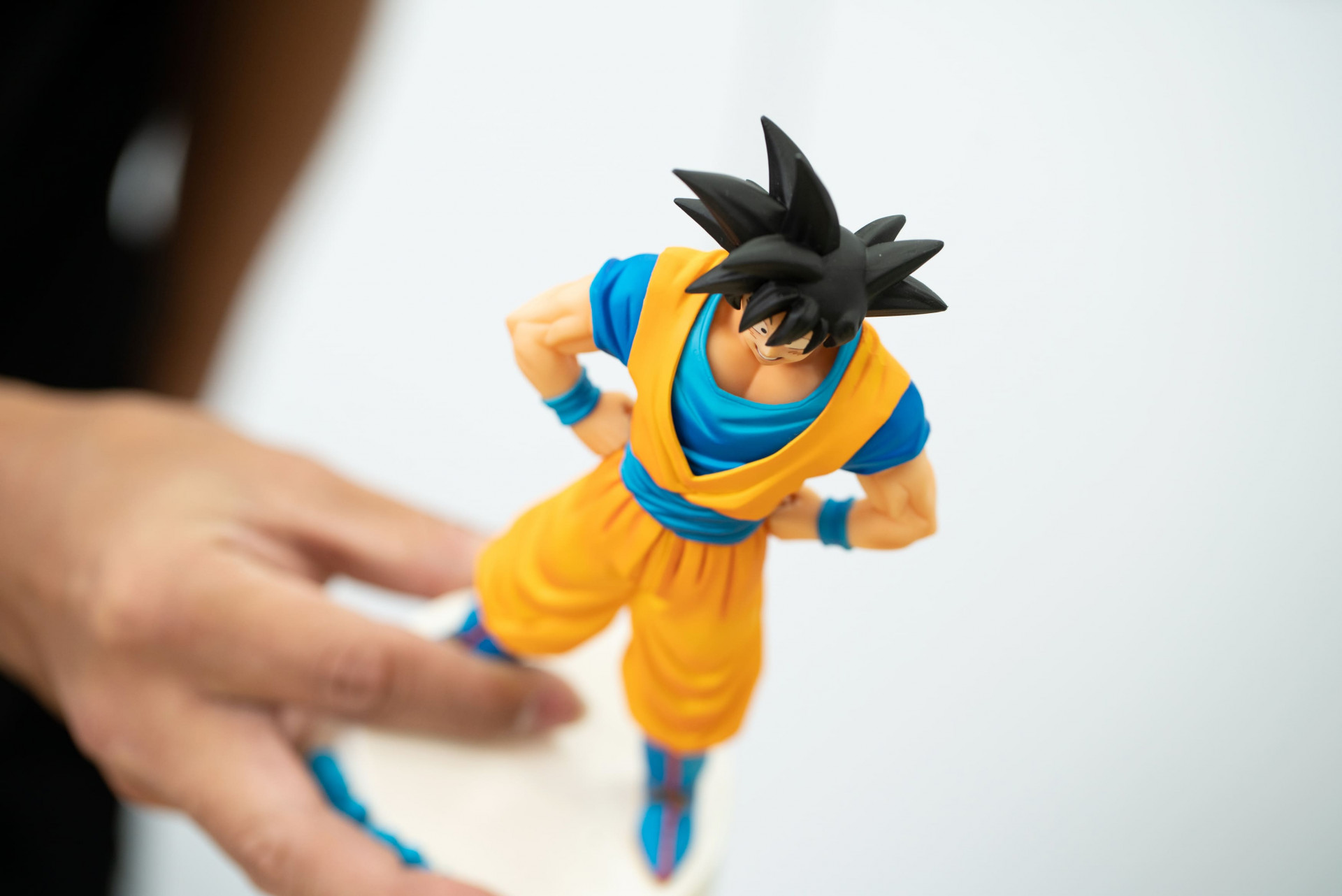
It's difficult to tell from still pictures alone, but thanks to advancements in production technology, creators became able to include fine details like small gaps between the skin, the blue undershirt, and the orange uniform, creating natural shadows on the figure and making the clothes appear more natural.
——More recently, you started holding special events to feature sculptors, such as the "Model Tenkaichi Budokai" and the "Model Kings Ultimate Showdown", where they'd put their sculpting skills to the test against each other.
Sakata: We really couldn’t do anything without sculptors, so we wanted to show the world just how amazing they really are, as well as possibly uncover some new talented creators in the field to further the advancement of the industry.
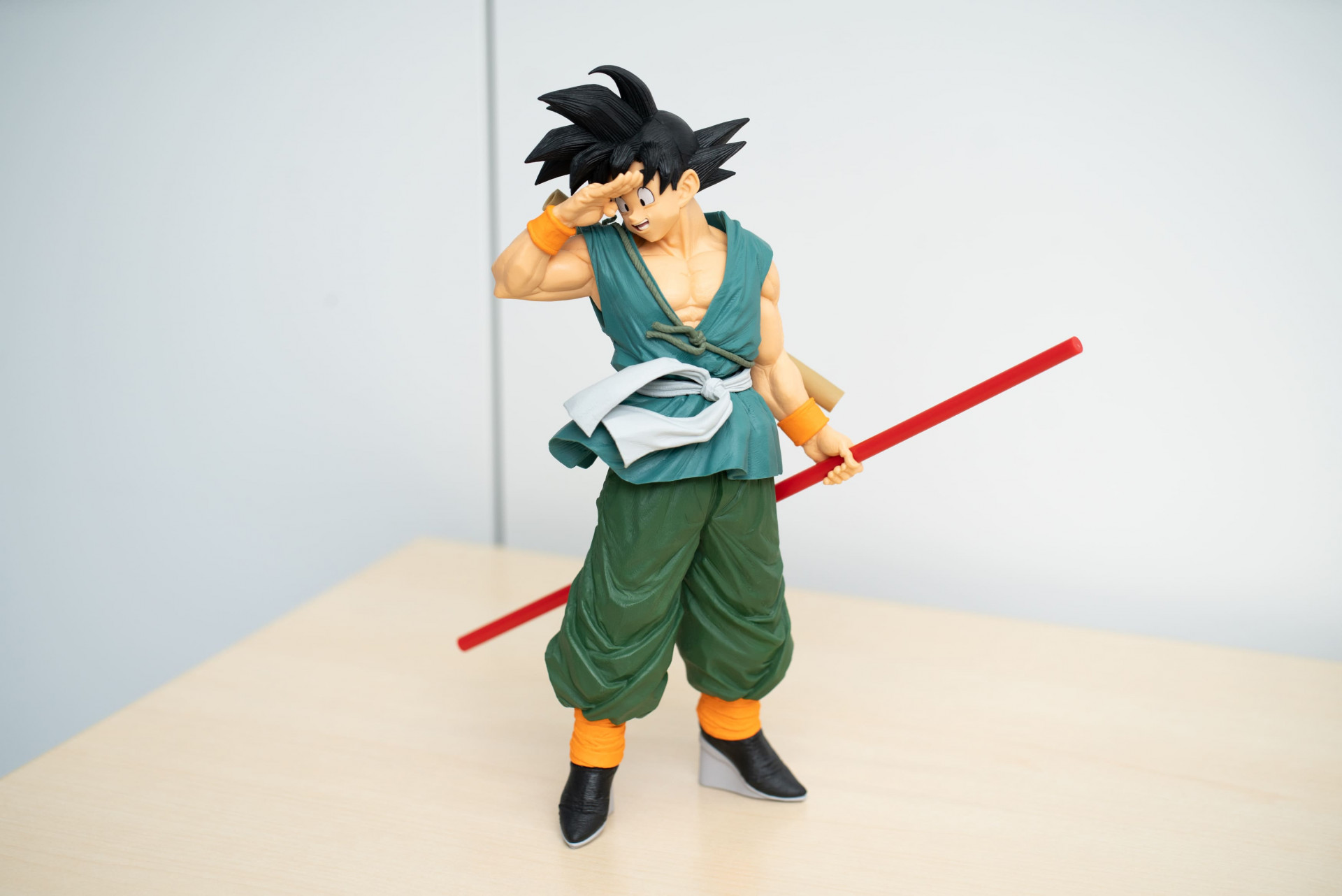
Sculptor Manabu Yamashita's fan-voted winner from the Model Tenkaichi Budokai 3 held in 2020 (Amusement Ichiban Kuji Figure). The countless folds and rippling of Goku's clothes as well as the way his belt appears to flap in an unseen wind show incredible skill and attention to detail.
——Are you going to continue searching for more great sculptors in the future?
Sakata: Always. And right now, it's all digital, so there's the potential to work with sculptors from any country or region on Earth, not just in Japan. I want to meet creators from all over the world. I really love seeing Dragon Ball figures that overseas creators are making—you can feel the passion just radiating from them.
And I think I'll get in trouble at the office for saying this, but...
——Do tell!
Sakata: Right now, only Bandai is producing Dragon Ball figures, but I think it'd be good if we let all kinds of companies and creators try their hand at making them too. Then we could do something like gather everybody involved in creating figures once every four years and have a competition to create the ultimate Goku figure or something. I think doing things like that would raise the bar across the whole industry.
——That sounds like a really great idea.
Sakata: I think we'd see some pretty awesome creations if we were able to do that.
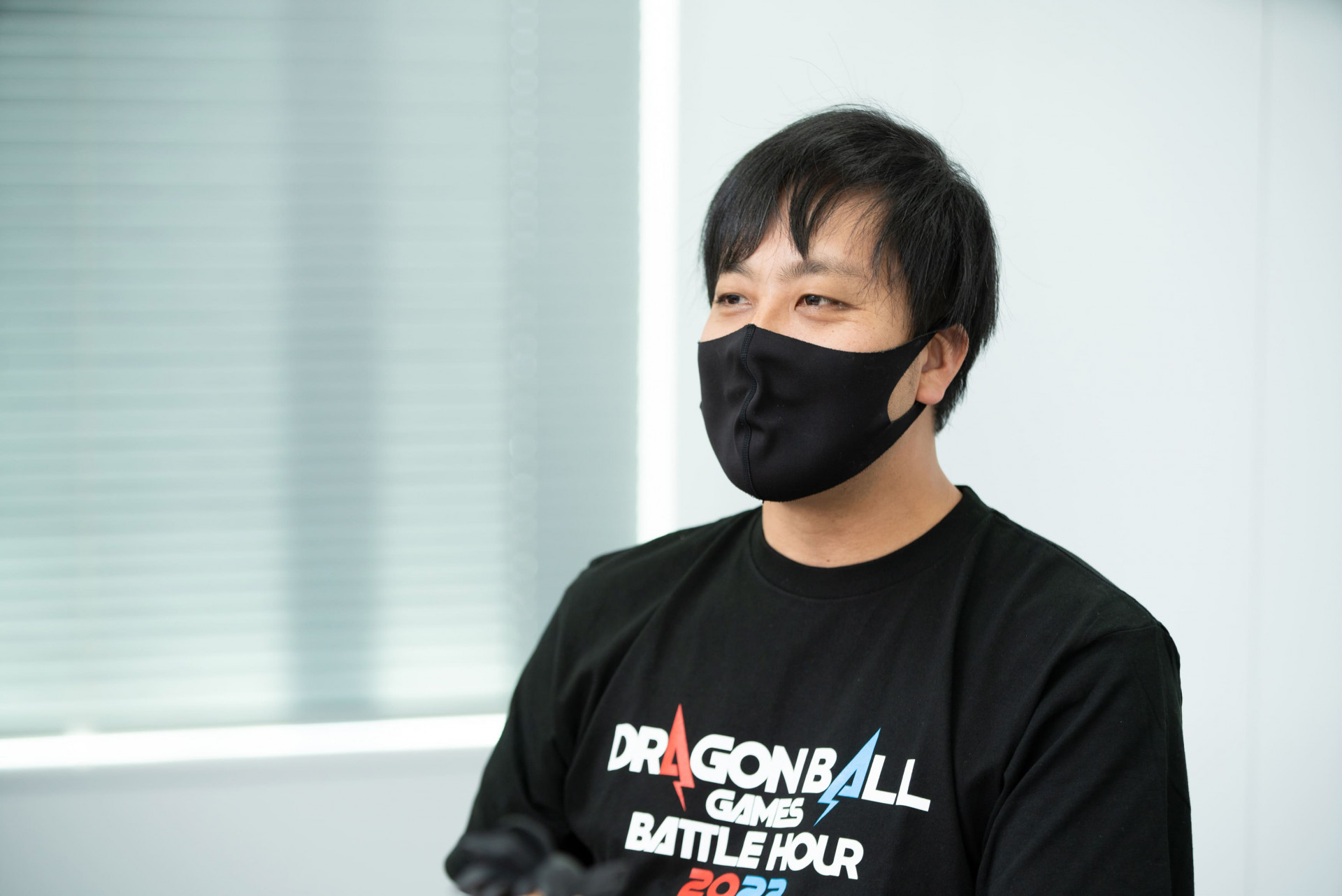
Making the Quintessential Dragon Ball Figure Series
——Is there a specific kind of figure that any of you would personally like to create?
Kato: I want to make a figure of Yamcha from back when he was a bandit at the start of the manga. I really like the feel-good tone of the manga back then, so I'd enjoy making something from that era.
Watanabe: I think I'd want to make something that no one has ever seen in either the manga or the anime. For example, something like Vegeta with his God of Destruction power and Ultra Instinct Goku posing like they're about to go head-to-head in battle.
Nakazawa: I don't know how many years I have left in me in the industry, but before I retire, I'd like to make two or three more dioramas. Something that focuses on the setting and environment or vehicles and mechs instead of characters. Otherwise, I want to try making something with real cloth for the clothing or real glass for the lenses in goggles, something like that where it's all about the materials. It would probably be pretty expensive though, so it might need to be a made-to-order product.
——All three of you have such great and differing ideas! I'd love to see them all come to life. How about you, Mr. Sakata?
Sakata: Dragon Ball is actually a latecomer to the figure industry, and so its history isn't very long in that sense. There are a great many different lines of figures available nowadays, but I feel like there still isn't anything that people see as the "staple" series that everyone collects.
For example, Gundam has Gunpla, which is just the ultimate Gundam product, right? I want to create a series that’s as universally loved and collected with the same kind of long-term following as Gunpla but for Dragon Ball.

Sculptors Mr. Nakazawa and Mr. Kato along with Mr. Watanabe will be creating a special figure on day 1 of DRAGON BALL Games Battle Hour 2022 on Feb 19 JST!
Tune in to see the behind the scenes of their creation!
Check here if you want to watch master sculptors in their element!
Interview, Article: Noriyuki Enami (Yajirobe)
Photography: Nanako Ono
This site includes machine-translated texts. Please be aware that you might find some unusual expressions that are difficult to understand.
Post
Confirm Post
Post the above comment?
Reply
Confirm Reply
Post the above comment?
Are you sure you want to delete this comment?
Report successful
Post Unsuccessful
This user will be muted.
You will be unable to see comments from muted users in the comments area.
*To unmute users, navigate to the "Comments" area on MY PAGE.
Reply
Confirm Reply
Post the above comment?
Edit
Post
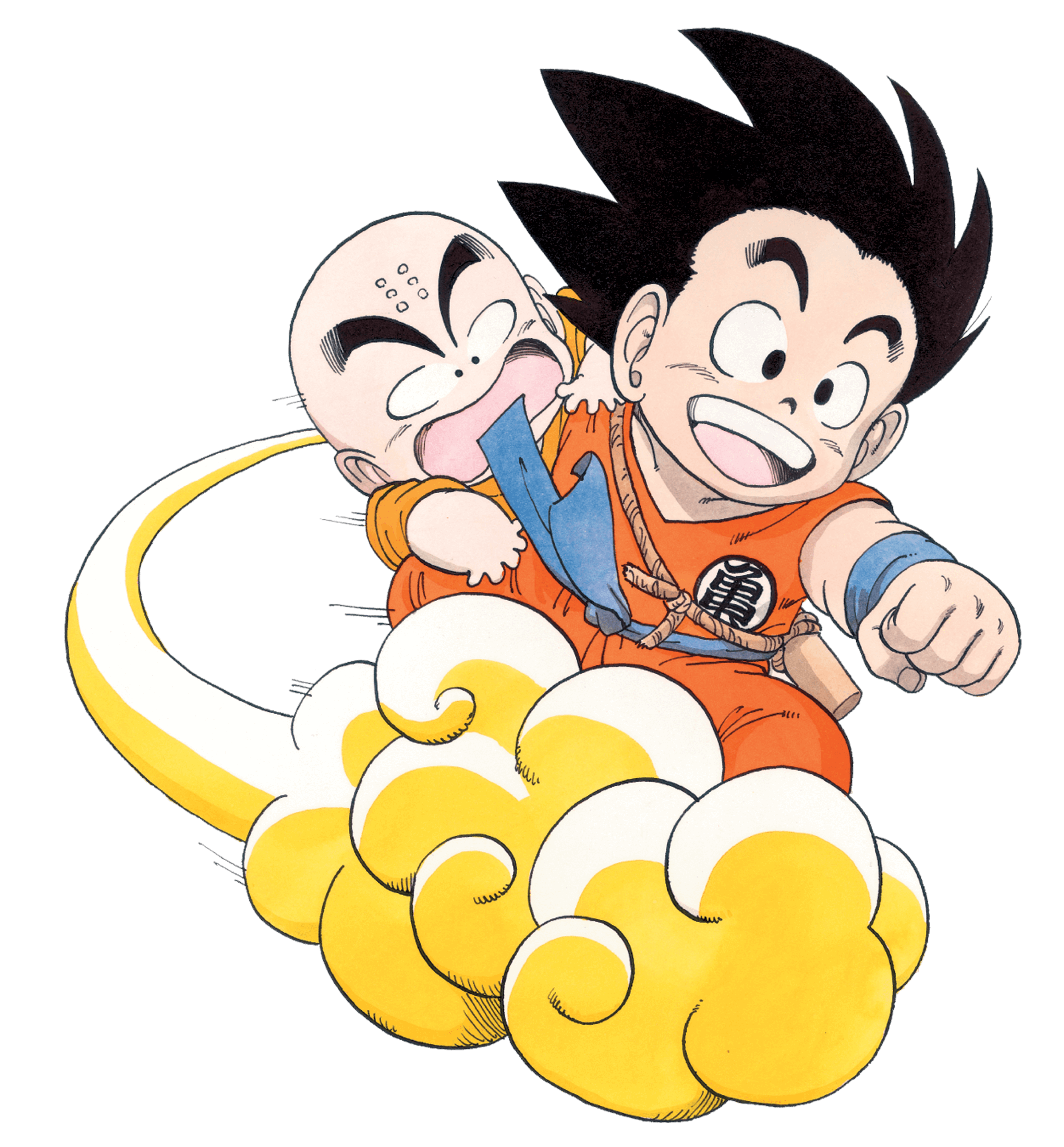


Post
Confirm Post
Post the above comment?
Edit
Post